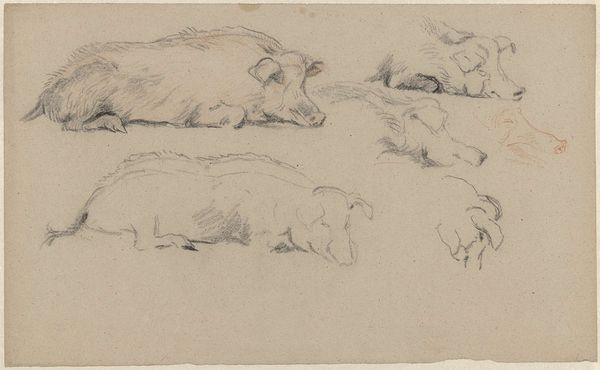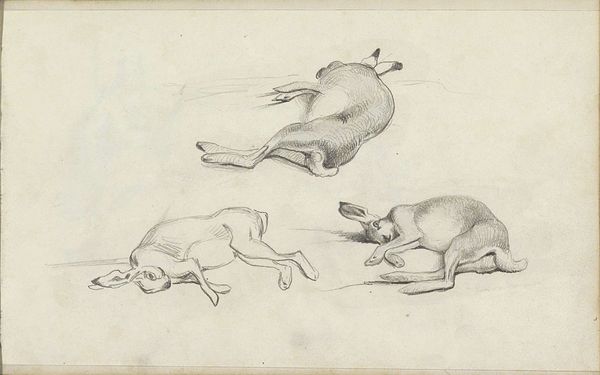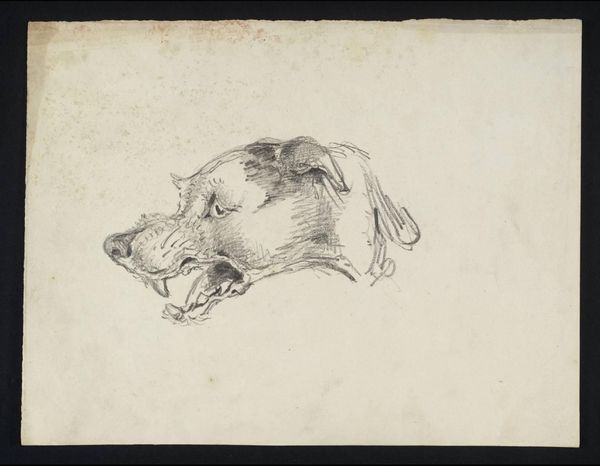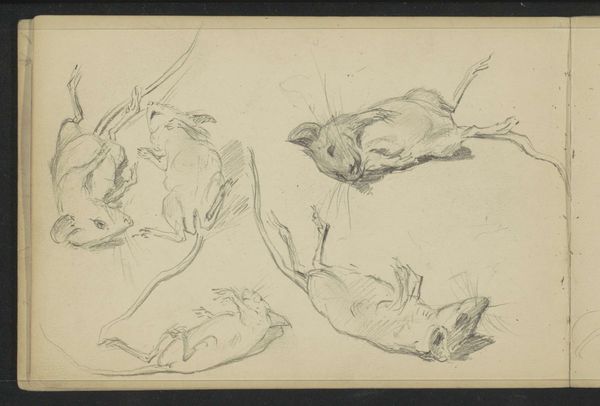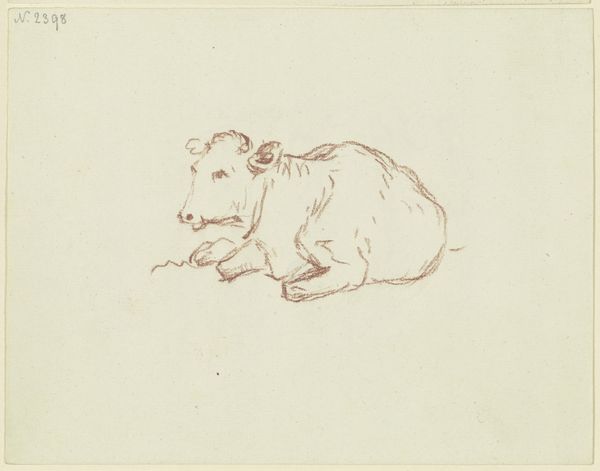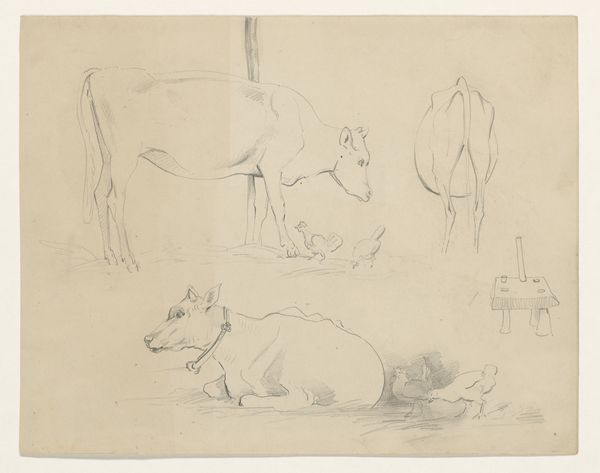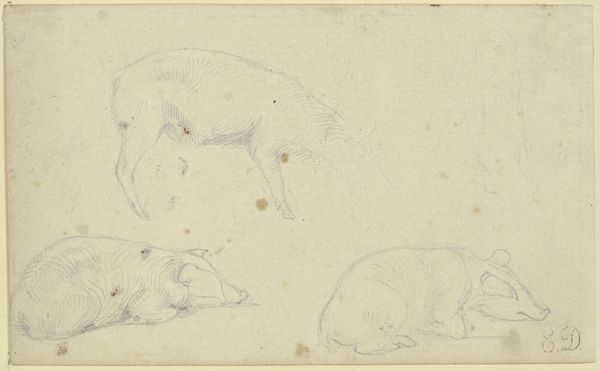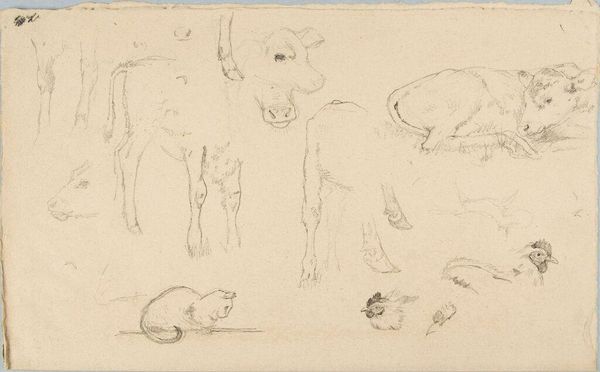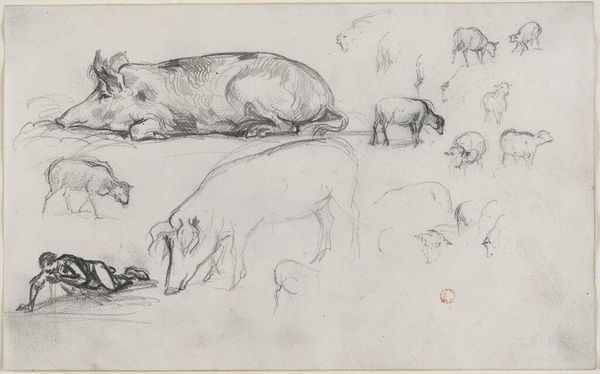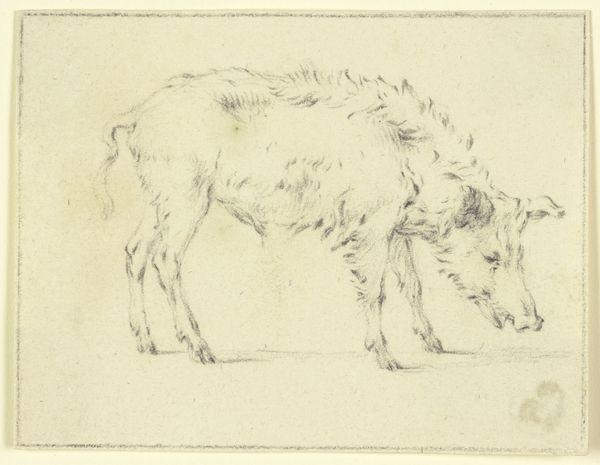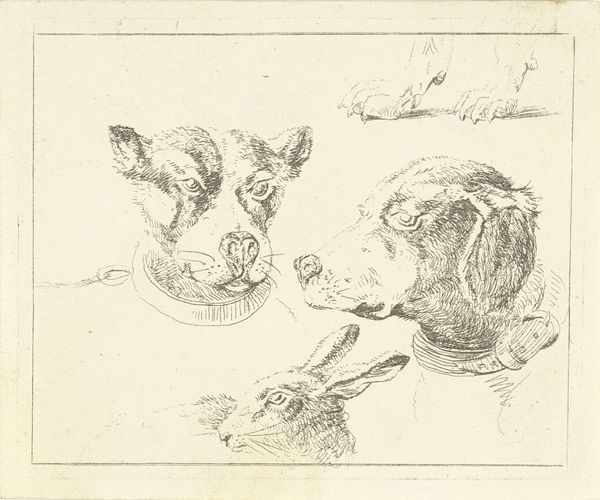
drawing, paper, pencil
#
drawing
#
animal
#
figuration
#
paper
#
pencil
#
realism
Copyright: Rijks Museum: Open Domain
Editor: Here we have *Liggende varkens*, or "Lying Pigs," a pencil drawing on paper by Cornelis Springer, dating sometime between 1846 and 1882. I’m struck by the artist's delicate touch in rendering these animals. What do you see in this piece, particularly in its composition? Curator: I notice first how Springer employed line to define form. The varying pressure of the pencil creates depth and volume, animating the recumbent forms. Observe the deliberate positioning of each animal. What compositional effect does this arrangement produce for you? Editor: They almost seem to float on the page, a little disconnected, because there is very little shading on the ground. Is it that simplicity, a direct focus on form and line that makes it read as Realist? Curator: Precisely! Springer's focus rests entirely on the depiction of these porcine subjects, absent narrative or environmental detail. Notice the economy of line – each stroke essential, contributing only to the definition of the animal's mass. A clear visual objective, isn't it? Editor: It really is. I can also appreciate how the sketches each give attention to rendering different angles. I see how the artist experimented with perspective in portraying these lying pigs. I realize that the artistic choices, emphasizing form, create a clear study piece, prioritizing observation and technique. Thank you. Curator: Indeed, reflecting upon these visual elements provides valuable insight into the work's aesthetic impact. A stimulating observation, young scholar.
Comments
No comments
Be the first to comment and join the conversation on the ultimate creative platform.
